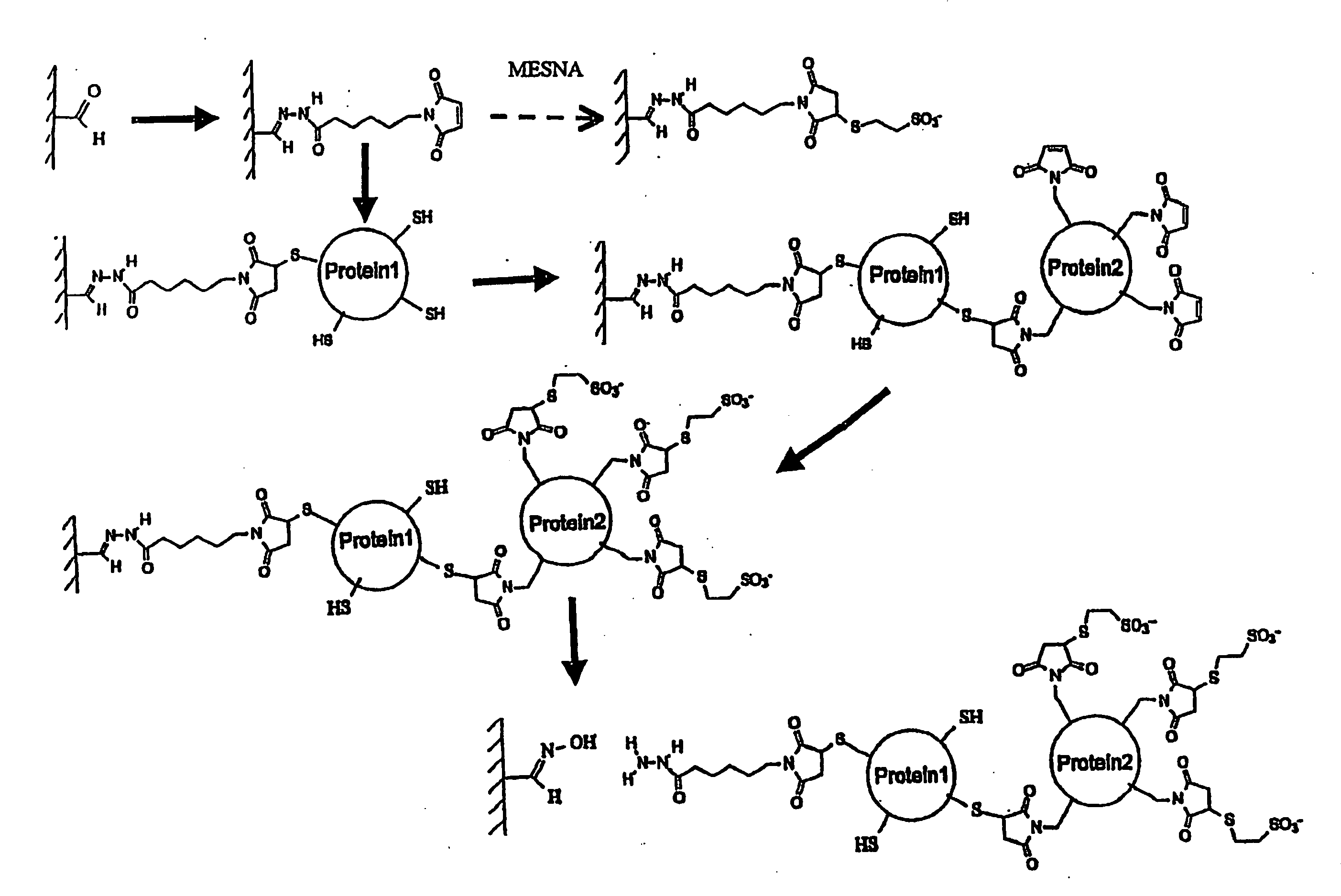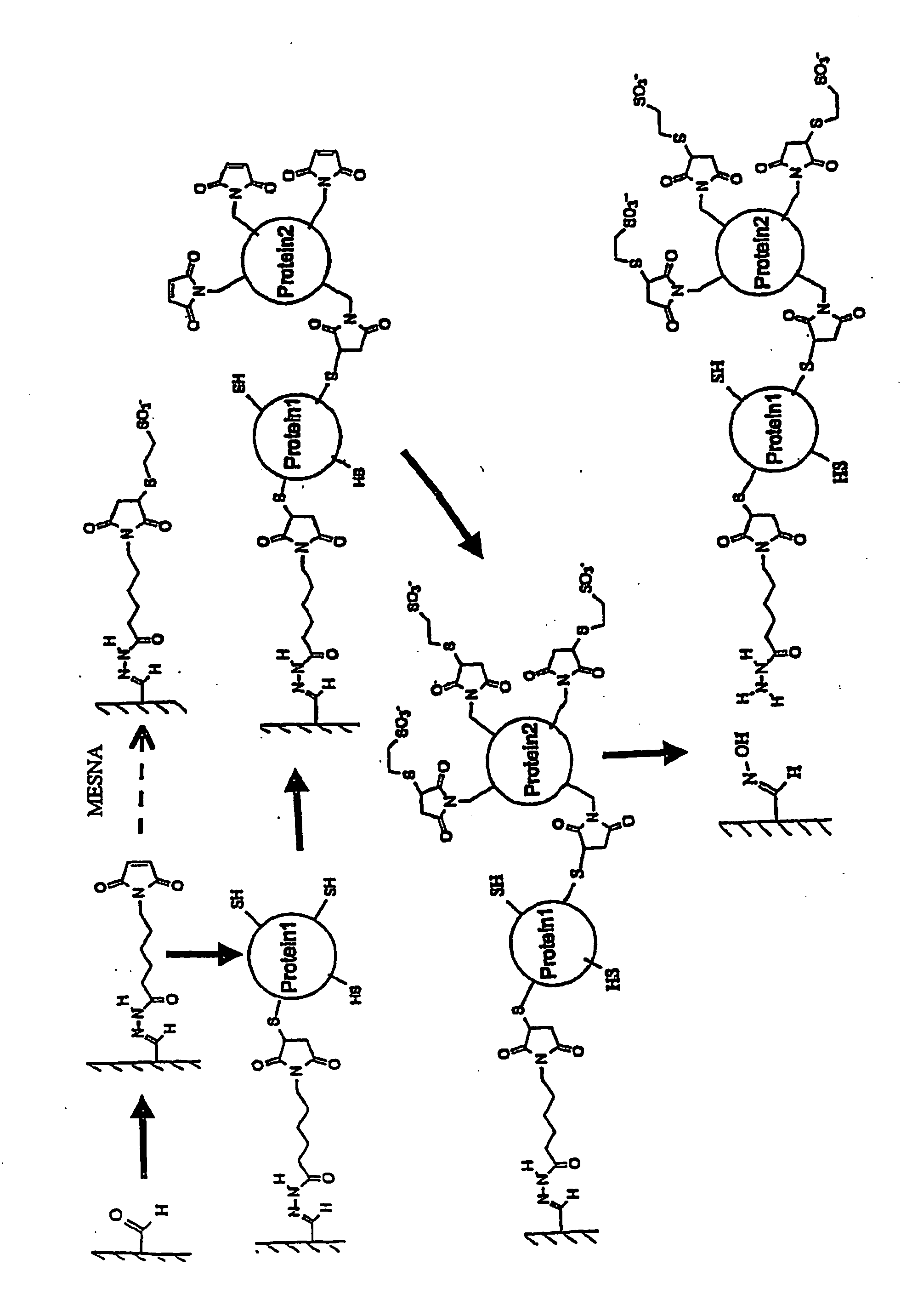Macromolecular Conjugates And Processes For Preparing The Same
a macromolecular and conjugate technology, applied in the field of new macromolecular conjugates, can solve the problems of uncontrollable network formation, uncontrollable conjugation, undesirable conjugation, etc., and achieve the effect of improving the condition or state of the organism
- Summary
- Abstract
- Description
- Claims
- Application Information
AI Technical Summary
Benefits of technology
Problems solved by technology
Method used
Image
Examples
example 1
[0088]This Example illustrates the preparation and initial characterization of conjugates comprising of alkaline phosphatase and antibodies specific for Thyroid Stimulating Hormone (TSH).
[0089]In this Example, a number of Molecular Conjugates are prepared on a porous solid. Each prepared Molecular Conjugate comprises R-phycoerythrin (RPE) as the First Macromolecule, from 1 to 5 layers of alkaline phosphatase, and a final layer consisting of an antibody specific for the alpha subunit of thyroid stimulating hormone. The size and TSH-specific ELISA activity of the prepared Molecular Conjugates are compared.
[0090]The drawing schematically depicts the process of controlled conjugation used in this Example. An agarose support was oxidized with periodate to give immobilized aldehydes. The hydrazide function of the heterobifunctional linker N-[ε-Maleimidocaproic acid]hydrazide (EMCH) was reacted with the aldehydes to give a maleimide group linked to the support via the hydrazone. A sulfhydr...
example 2
[0119]In this example, an embodiment of the inventive method is used to prepare a conjugate for a chemiluminescence assay. In the prior art, the chemiluminescent molecule acridinium is often linked directly to an amine group of an antibody of interest. Since the chemiluminescent signal is proportional to the number of acridinium moieties bound per antibody, there is a desire to link as many as possible. However, an excessive amount of acridinium bound to the antibody can interfere with its specific binding to the target molecule, and also can contribute to nonspecific binding to other components of an assay, thus degrading performance.
[0120]In this example R-phycoerythrin is heavily substituted with thiol groups, then bound to a solid support. Antibody is activated to contain maleimide groups, and linked to the R-phycoerythrin core. In one portion of this mixture the remaining maleimide groups on the antibody are capped with sulfonate groups using MESNA, while in another portion the...
PUM
| Property | Measurement | Unit |
|---|---|---|
| length | aaaaa | aaaaa |
| length | aaaaa | aaaaa |
| length | aaaaa | aaaaa |
Abstract
Description
Claims
Application Information
 Login to View More
Login to View More - R&D
- Intellectual Property
- Life Sciences
- Materials
- Tech Scout
- Unparalleled Data Quality
- Higher Quality Content
- 60% Fewer Hallucinations
Browse by: Latest US Patents, China's latest patents, Technical Efficacy Thesaurus, Application Domain, Technology Topic, Popular Technical Reports.
© 2025 PatSnap. All rights reserved.Legal|Privacy policy|Modern Slavery Act Transparency Statement|Sitemap|About US| Contact US: help@patsnap.com


